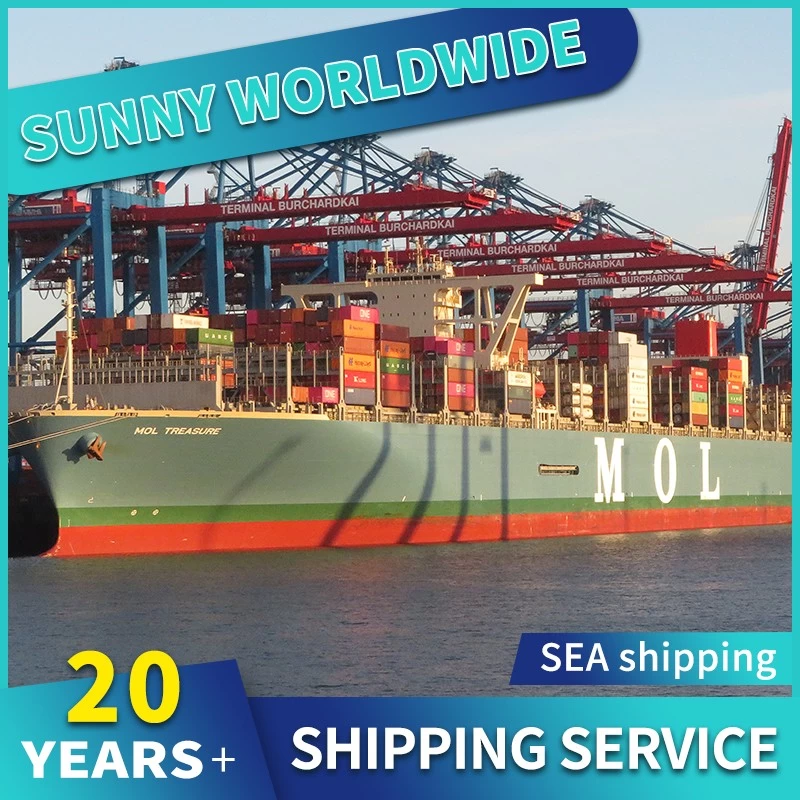In 2025, U.S. President Donald Trump imposed a series of tariff measures against China, including additional tariffs ranging from 10% to 50% on Chinese imports and exorbitant port fees on Chinese shipping companies. These policies have directly disrupted Sino-U.S. trade, with freight forwarders in the maritime sector bearing the brunt of the impact. According to industry analysis, the average tariff rate on Chinese exports to the U.S. has surpassed 20%, with combined tariffs on some goods nearly tripling compared to pre-2018 levels. Coupled with a 600% surge in port fees, shipping costs on the U.S.-China route have soared, exerting significant upward pressure on freight rates.

Industry Impact
Sharp Decline in U.S.-China Trade Volume
The tariff hikes have driven up import costs, prompting U.S. importers to reduce orders for Chinese goods and shift supply chains to Southeast Asia and Mexico. Companies like Dongguan Hong** Logistics have collapsed due to unpaid customer debts, exposing structural issues such as high customer concentration and extended payment terms. Data indicates a year-on-year drop of over 30% in cargo volume on the U.S.-China route, with severe container backlogs at U.S. ports.
Volatile Freight Rates
Excess capacity on trans-Pacific routes has led shipping lines to consolidate services or reduce sailings to stabilize rates, though short-term pressures persist. Alternative routes, such as China-Europe and China-Brazil, have seen demand surges, pushing up freight rates. For instance, grain shipments from South America to Asia have driven rate increases exceeding 20% on relevant routes.
Soaring Operating Costs
Port entry fees for Chinese vessels have skyrocketed from USD 250,000 to USD 1.5 million per call, compounded by a "supply chain traceability" policy (imposing a USD 750,000 surcharge if 25% of a vessel's fleet is Chinese). These measures could triple freight costs on the U.S.-China route. Freight forwarders also face additional costs, such as container inspection fees rising from USD 1,000 to USD 6,000 per unit.
Strategic Responses
Optimizing Shipping Networks
Shipping lines are realigning routes, reducing direct U.S.-China sailings, and boosting capacity on alternative routes like Asia-South America and Asia-Europe. Companies such as Maersk anticipate emergency air freight orders and increased bonded warehousing demand ahead of tariff implementation to mitigate risks.
Accelerating Digital Transformation
Freight forwarders are leveraging AI algorithms to optimize route planning and container utilization. Firms like Flexport are adopting AI-driven solutions to navigate uncertainties from tariff policies, using digital tools to predict tariff impacts and select cost-effective route combinations.
Reconfiguring Regional Supply Chains
Companies are expanding overseas warehousing and using "pre-clearance" strategies to avoid tariff risks. Some cross-border e-commerce sellers are sourcing raw materials from Southeast Asia and South America to reduce reliance on Chinese manufacturing. For example, Best Buy has collaborated with suppliers to adjust supply chains and import goods in advance of tariffs.
Policy Advocacy and Industry Collaboration
China is promoting intra-regional maritime growth through agreements like RCEP to counterbalance trans-oceanic shipping dominance. Freight forwarders are actively engaging in policy advocacy, such as submitting objections via U.S. law firms to reduce fees.
While tariff policies pose significant short-term challenges, the maritime freight forwarding industry is accelerating its shift toward digitization and regionalization. Companies must adapt through flexible capacity adjustments, market diversification, and optimized logistics solutions. Policy uncertainties also drive investments in low-carbon vessels to meet stricter environmental regulations. Sunny Worldwide Logistics always care your shipment.